“The Psalm”
“I believe [painting] speaks for me more powerfully than a photograph because it is imperfect. It is a continuous challenge.” Artist Kirsten Van Mourick also finds a challenge in portraying the surreal. Van Mourick has experimented with subtlety and striking symbolization, all for the sake of revealing life seen through a spiritual lens. Images of daily activities—a mother bathes her young children, or a group of friends break bread at a picnic—radiate the unseen as much as the seen.
“I generally only paint people I know, because most often I have picked them to play a part in a specific story,” says Van Mourick who is inspired by the bible. She chooses people who are close to her because she recognizes a parallel between them and a figure in the text. “They embody that idea, character, or story. For example, my friend who I picked to portray John the Baptist is in his own rite, a wonderfully wild man who plays the mandolin and rarely wears shoes! He speaks the truth in confidence and kindness, and I couldn’t imagine using anyone else.”
“A concept that I am always attempting to wrestle into my pieces is the presence of God. Since I believe that we were created in his image, and that community is one of the most important ways that we learn about and experience Him, I long to communicate the way we participate with Him when we make our lives worship.” Perhaps the strongest representation of these combined ideas is Van Mourick’s painting “Communion.” What appears to be a quaint picnic scene at first glance reveals itself to be a gathering of individuals sharing bread and wine. These are elements traditionally representative of the body and blood of Jesus Christ when consumed within church walls. The blanket is almost liquid, like fabric floating on air. The surreal surroundings, the ritual bread and wine, transform a commonplace activity into something that isn’t quite of this world.
“Communion”
“Moriah”
Van Mourick also uses animals and metallic gold elements to express the spiritual. In “Moriah,” a mother nurses her child while a ram rests in the golden-leafed background. “This work was part of a small series that explored the pain of motherhood, and how, for me, the only way to relieve anxieties and fears that I felt about my children was to put them on the altar and trust God’s purpose for them.” The ram is “a nod to when Isaac was almost sacrificed by Abraham,” says Van Mourick. Abraham’s willingness to nearly perform a literal sacrifice revealed that in his heart, spiritually, he had trusted his child to God. It is here that Van Mourick’s portraits of mothers find their peace—within.
In “Baptism” a mother bathes her children. This mother is not the tired, Norman Rockwell-esque housemaker who is desperate for silence and a glass of wine. In Van Mourick’s painting, there is a sense of gratitude and awe as the figure carries out the nurturing task. All of this is felt without being able to see the mother’s face. The viewer imagines that the child looking up at her is reflecting her expression. The title speaks to an act of spiritual purification, where someone approaches God willfully. The mother in the painting doesn’t bathe her children with contempt for the events that led them there. She embraces them. This is a reflection of baptismal experience in the presence of God, a place where Van Mourick finds ceaseless inspiration.
“Baptism”
Going into 2017, Van Mourick is working on a series inspired by the gospel of John. Van Mourick says, “Sometimes I use a lot of symbolism and parallels, but sometimes there is just a moment that shines to me and I want to communicate it.”
Visit vanmostudio.com for more information on Kirsten. The artist works in her studio in Clemente, CA, teaches painting tutorials, and works on commissioned projects.

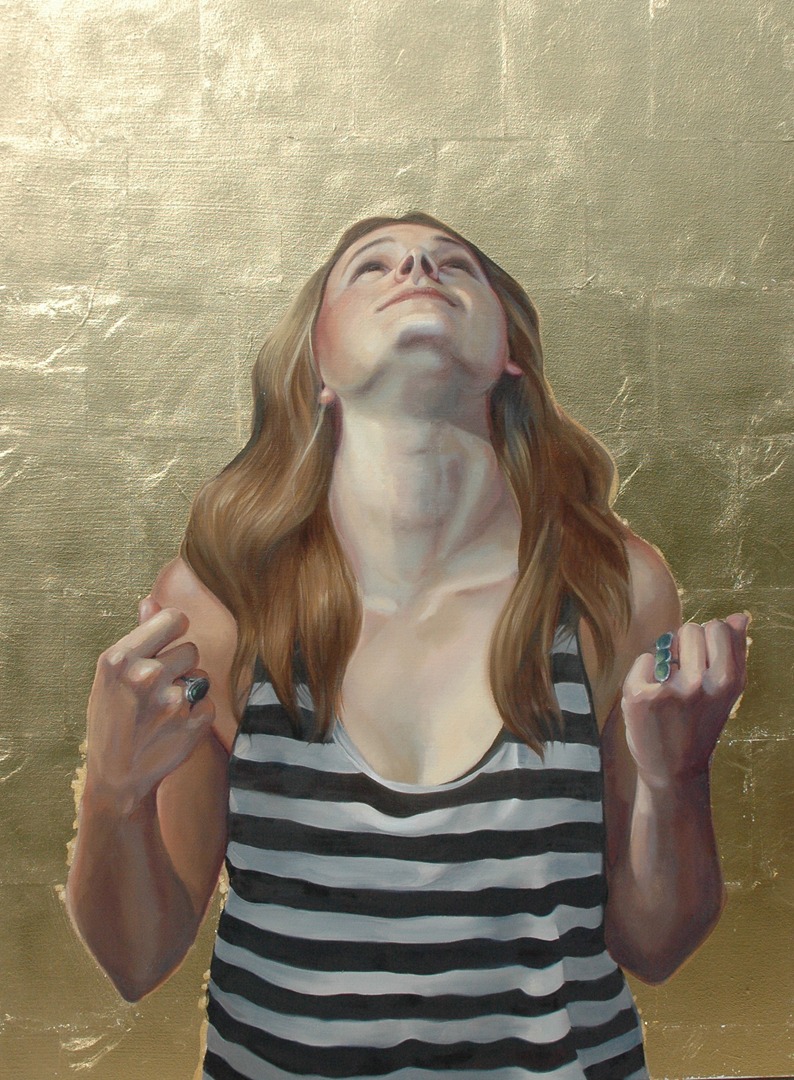
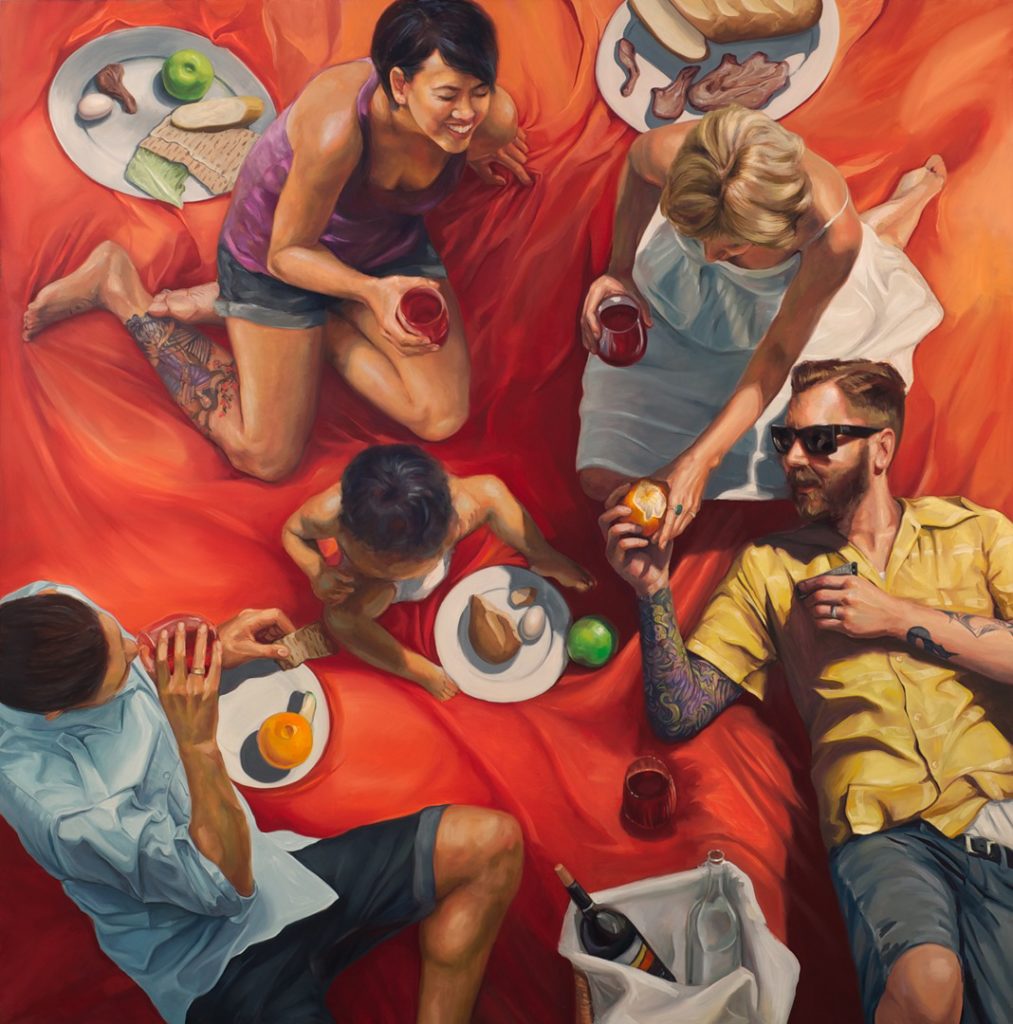
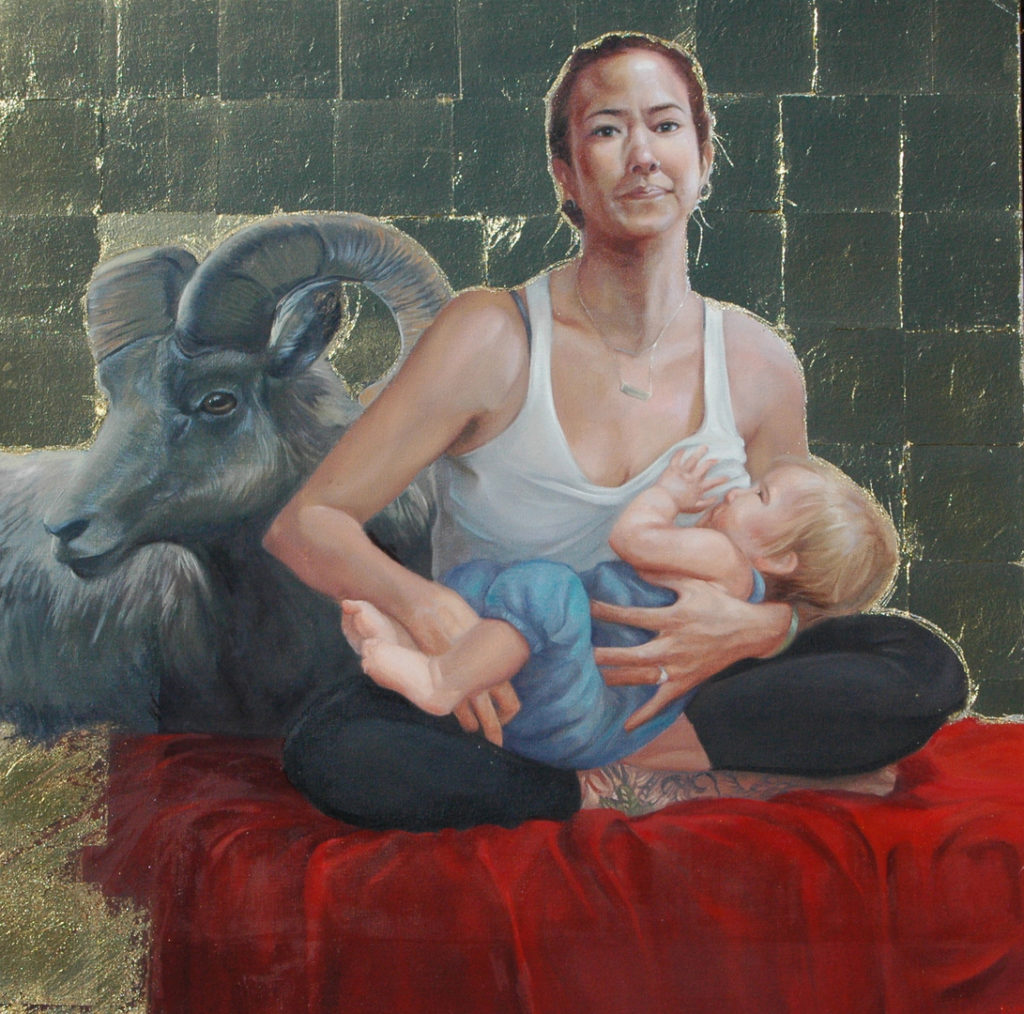
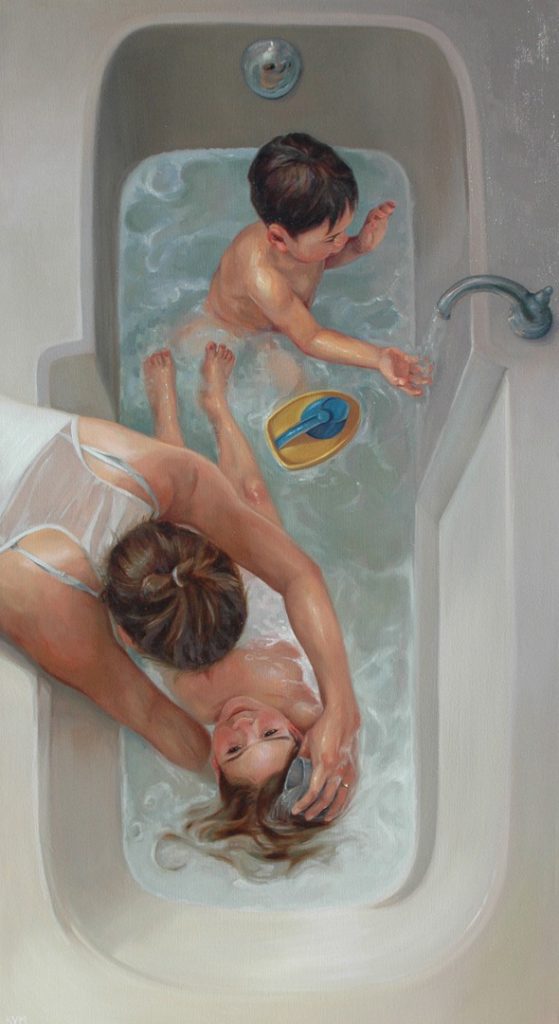
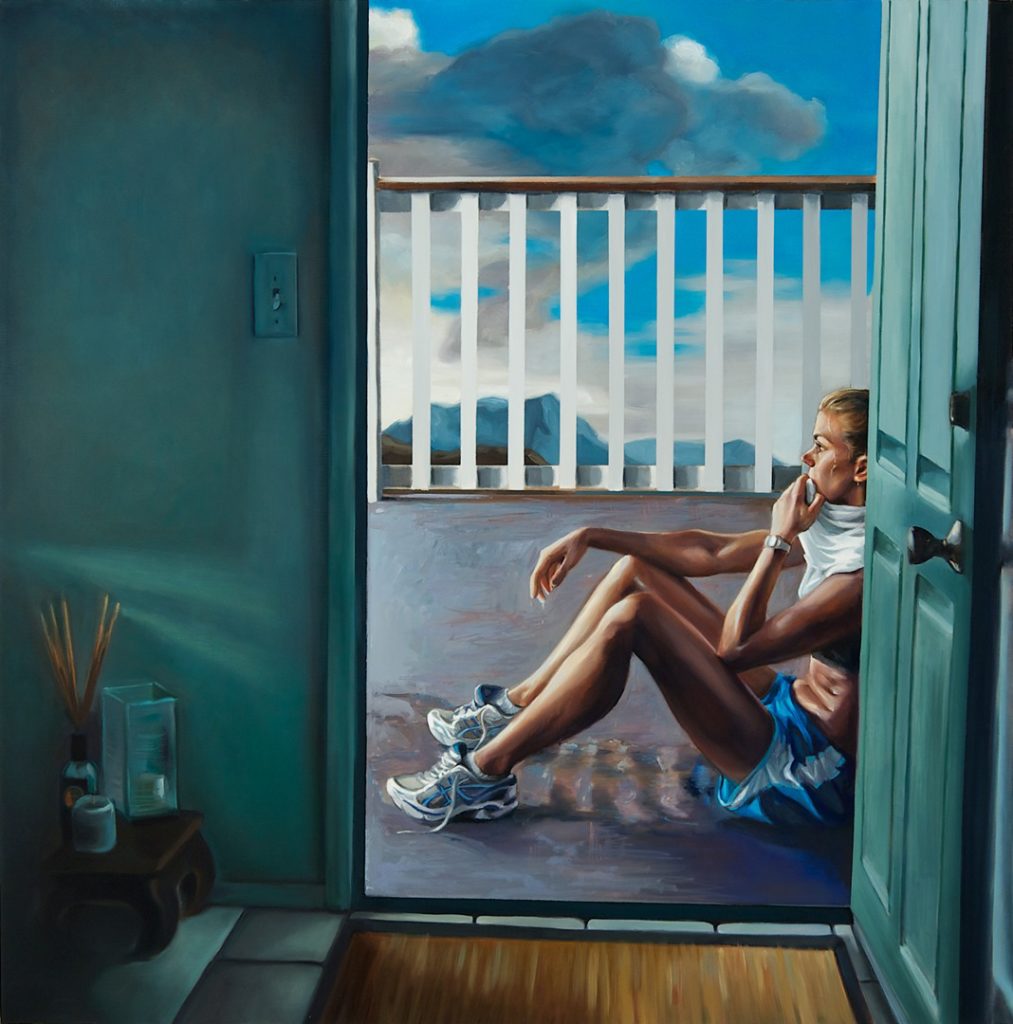

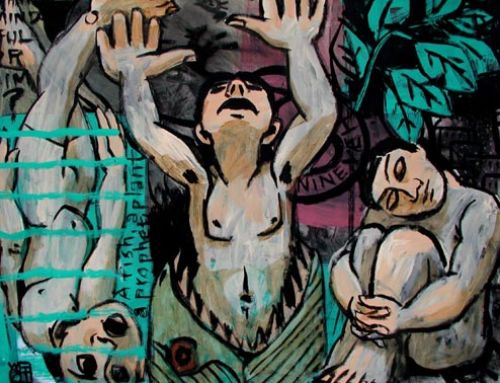
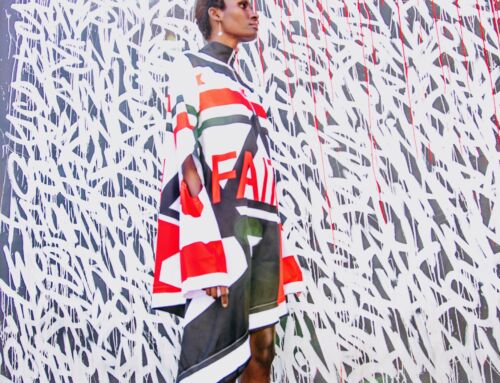
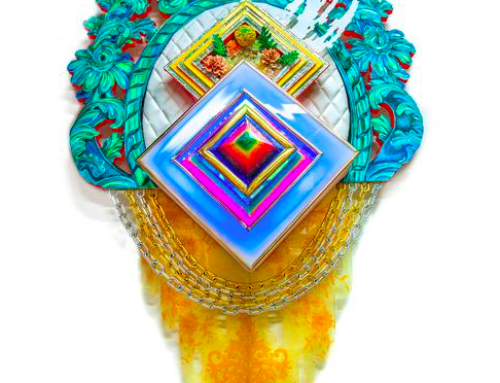
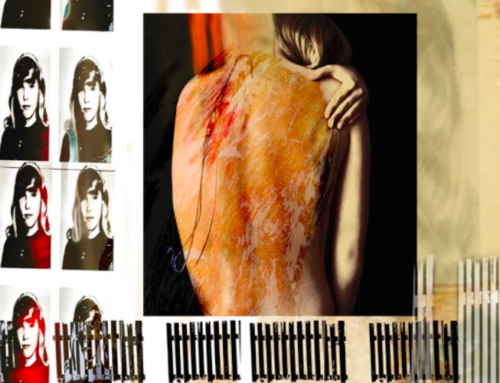
[…] Read more on the International Fine Art Fund Blog […]